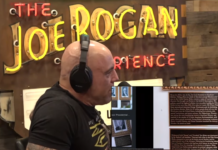In a significant legal decision that has captured the attention of the music industry and legal experts alike, a Brooklyn judge has ruled that rap lyrics cannot be used as evidence in the trial of the man accused of killing Run-DMC’s Jam Master Jay. This ruling marks a pivotal moment in the ongoing debate over the admissibility of artistic expression in criminal proceedings.
The Case at Hand
The trial centers around the tragic death of Jam Master Jay, born Jason Mizell, a pioneering figure in the hip-hop world and a member of the legendary group Run-DMC. His untimely demise in 2002 sent shockwaves through the music community and remained an unsolved mystery for years. The accused, Karl Jordan Jr., along with an accomplice, Ronald Washington, faced charges of confronting and fatally shooting Mizell in his recording studio. The prosecution's attempt to introduce Jordan's rap lyrics as evidence of his involvement in the crime was met with a decisive response from Brooklyn Federal Judge LaShann DeArcy Hall.
The Judge's Ruling
Judge Hall's 14-page order is not just a legal document but a tribute to the history and cultural significance of hip-hop. She meticulously traced the evolution of the genre over five decades, highlighting its role as a voice for the voiceless and a platform for storytelling. In her ruling, Judge Hall emphasized that the lyrics in question, which depicted violence and drug dealing, did not specifically detail the crime against Mizell. Instead, they were seen as generic references common in many rap songs.
The judge's decision aligns with a growing concern about the potential misuse of artistic works in criminal cases. By pointing out that similar themes of violence and struggle are present in various music genres, Judge Hall underscored the importance of not singling out rap music. Her ruling reflects a broader understanding of the distinction between art and reality, acknowledging that artists should have the freedom to create without fear of their work being used against them in court.
Implications for the Music Industry and Legal System
This landmark ruling has far-reaching implications, both for the music industry and the legal system. It challenges the notion that an artist's creative output can be directly linked to their personal actions or intentions. The decision also raises questions about the role of racial and cultural biases in the judicial process, particularly in cases involving rap music, a genre often subjected to scrutiny and misunderstanding.
The use of rap lyrics in criminal trials has been a contentious issue in several high-profile cases, including the ongoing racketeering trial of Young Thug. Defense attorneys in these cases have argued that presenting lyrics as evidence amounts to character assassination and can unfairly influence a jury. Judge Hall's ruling in the Jam Master Jay case sets a precedent for future trials, suggesting that courts should be cautious in allowing hip-hop lyrics to be used against defendants.
The Ongoing Trial and Search for Justice
Despite the ruling on the admissibility of rap lyrics, the trial of Karl Jordan Jr. and Ronald Washington continues. The prosecution argues that the killing was an act of revenge for being cut out of a drug deal. Over the years, investigators have made significant strides in the case, conducting new interviews, ballistic tests, and securing witness cooperation. The defense, on the other hand, claims that the government's delay in indicting the accused has hindered their ability to mount an effective defense.
Both men have pleaded not guilty, and a third defendant, charged in May, will be tried separately. As the trial progresses, the music world and legal observers alike will be watching closely, not only for the outcome but also for the impact of Judge Hall's ruling on the use of artistic expression in criminal cases.
Conclusion
The Jam Master Jay murder trial and the subsequent ruling on the use of rap lyrics in court represent a critical juncture in the intersection of art, law, and social justice. This case underscores the need for a nuanced understanding of artistic expression and its role in the legal system. As we continue to grapple with these complex issues, the legacy of Jam Master Jay and the cultural significance of hip-hop remain at the forefront of this ongoing conversation.



![Muslim Thought She Outsmarted Ben Shapiro — But One Answer Exposed Everything [Video]](https://pagetraveler.com/wp-content/uploads/2025/12/shapiro-218x150.png)